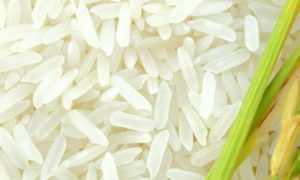Global palm oil prices likely to remain stable in 2025

Palm oil prices in 2025 are expected to remain stable at around MYR 4,150/tonne, despite rising global output. Strong demand from India and China, and biofuel policies in the US and Indonesia, support prices. However, high Malaysian and Indonesian stockpiles and robust production could limit rallies. Indian imports are forecast to rise 10.3%, aiding global price stability.
Global palm oil prices will likely remain stable in 2025 on a slew of factors such as consumption demand from India and China and biofuel policy measures by the US and Indonesia, despite forecasts of global production output increase.
Research agency BMI, a Fitch Solutions Company, has maintained its average annual price forecast for Bursa Malaysia-listed crude palm oil (CPO) futures contracts at MYR (Malaysian ringgit) 4,150 a tonne in 2025. BMI forecast expected palm oil prices to trade between MYR 3,800-4,000 a tonne for the remainder of 2025. It sees demand increase from India and China, and biofuel policy measures by the US and Indonesia could help maintain this price.
Production to top 80 mt
According to BMI, global palm oil production is likely to reach 80.6 million tonnes (mt) in the 2025-26 (October-September) season, representing a 2.4 per cent year-on-year (y-o-y)increase. It expects Malaysian palm oil output to reach 19.5 mt, a 0.5 per cent y-o-y increase; and Indonesian output to reach 47.5 mt, a 3.3 per cent increase, in the 2025-26 season.
The Malaysian Palm Oil Board had indicated a 5.9 per cent y-o-y reduction in CPO output during the first quarter of 2025. In its first quarter price forecast update, BMI said Malaysian CPO production would recover over the coming months.
BMI report said cumulative output in April and May 2025 totalled 3.5 mt, a y-o-y increase of 7.8 per cent. This recovery has helped alleviate some of the recent tightness in the global market, exerting downward pressure on prices.
Current strong Malaysian stockpiles will continue to moderate any significant upturn in global prices. With inventories at levels sufficient to absorb short-term production dips, Malaysian supply is likely to act as a cap on any sustained price rallies in 2025.
Rise in output pace
Referring to a recent press release by Indonesian Palm Oil Association, BMI said the data points to a recent acceleration in production. April’s output of 4.5 mt marks a y-o-y increase of 8.8 per cent, and a 2 per cent month-on-month gain, largely reflecting seasonal production factors. This robust production pace is exerting further downward pressure on global prices, it said.
“Overall, we expect that the combination of robust Indonesian production and subdued export demand will keep global palm oil prices contained, moderating any upward pressure arising from broader gains in the edible oils complex throughout 2025,” it said.
Indian consumption key
BMI expects global palm oil consumption to reach 78.3 mt in the 2025-26 season, representing a y-o-y increase of 1 per cent. It expects the global production surplus to widen from 1.2 mt in the 2024-25 season to 2.3 mt in the 2025-26 season, which, it thinks, will place a lid on global prices throughout the remainder of 2025 and into the first half of 2026.
It said while Indian palm oil consumption is expected to increase by 1.6 per cent y-o-y, the country’s carry-over stocks are set to decline sharply, with beginning stocks for the 2025-26 season forecast by the USDA (US Department of Agriculture) to be 26.7 per cent lower y-o-y at 1.9 mt.
“Combined with favourable pricing relative to soya oil, we expect import demand to rise significantly, supported by USDA projections of imports reaching 8.7 mt in 2025-26, up 10.3 per cent y-o-y. As outlined above, we anticipate this import demand to pick up over the coming months, providing support for global palm oil prices and helping to moderate the downside pressure from improved supplies in Indonesia and Malaysia,” it said.
On the Indian consumption pattern, BV Mehta, Executive Director of the Solvent Extractors’ Association of India (SEA), said palm is the cheapest oil today, which was not the case three months ago. The demand was reduced then as it was the most expensive oil. Indonesian government’s decision to go in for the B40 biofuel mandate was one of the main reasons for prices going up three months ago, he said.
Noting that import would be around a million tonnes in June, Mehta said India would be, as usual, importing around 8-8.5 mt of palm oil during the current oil year 2024-25.
BMI report said China is also expected to increase its palm oil import volumes by 8.7 per cent y-o-y in the 2025-26 season, driven by a drawdown in domestic stockpiles and competitive global pricing.
BMI said while overall demand prospects may not point to a significant upturn, the combination of reduced stockpiles and favourable pricing in key importing countries should provide a base of support for palm oil prices, tempering the bearish impact of increased output from major producers, it said.
Policy measures
Following the release of the US EPA’s (Environmental Protection Agency) blending proposals for 2025 and 2026, the edible oil complex — primarily led by soya oil — has found significant upside support, with soya oil prices closing 10.2 per cent higher on June 27 compared to pre-EPA proposal levels on June 12.
Consequently, having traded at a premium to soya oil through first quarter, palm oil is now priced at a discount, which BMI calculates to be 9.4 per cent.
USDA’s ‘Oilseeds: World Markets and Trade’ report for June said that palm oil export prices for both Indonesia and Malaysia fell below soya oils at the start of June. Month-to-month, palm oil prices strengthened alongside South American soya oils, but maintained competitiveness as production increases and exports pick up seasonally.
Indonesia’s implementation of the B40 mandate is likely to boost domestic demand for palm oil. BMI anticipates that some demand from major importing countries will shift to Malaysia, increasing relative demand for Malaysian palm oil and lending further support to Bursa Malaysia-listed palm oil prices.
However, BMI’s average price forecasts suggest a slight easing in 2026, with prices expected at MYR 4,075 a tonne as near-term production challenges improve.
To Read more about Edible Oil News continue reading Agriinsite.com
Source : The Hindu Business line














